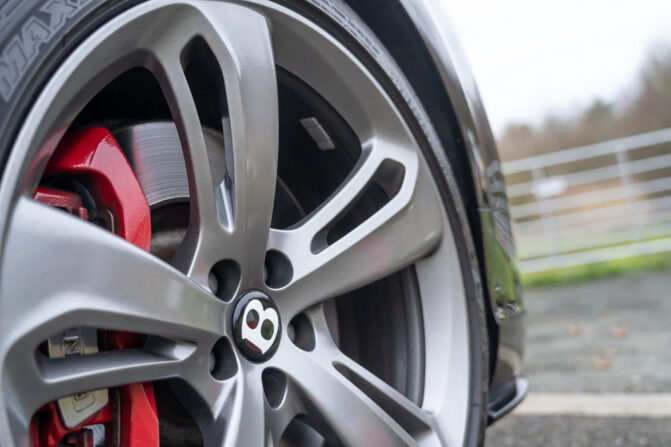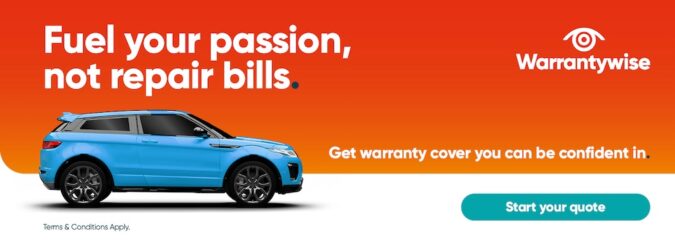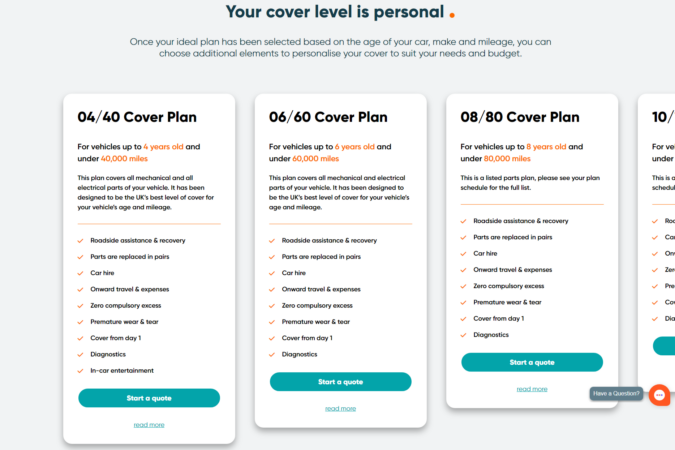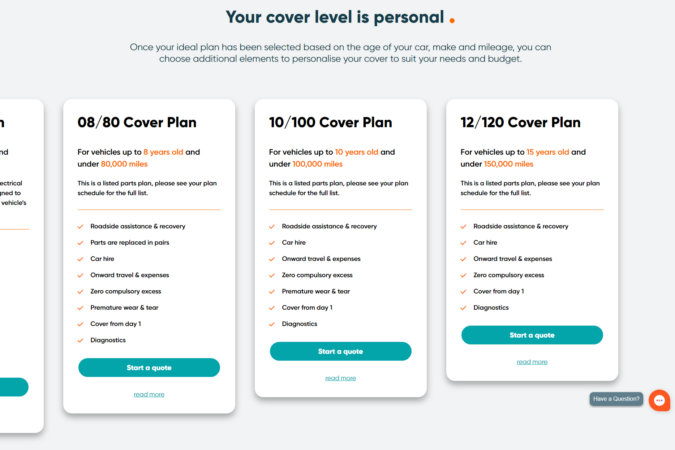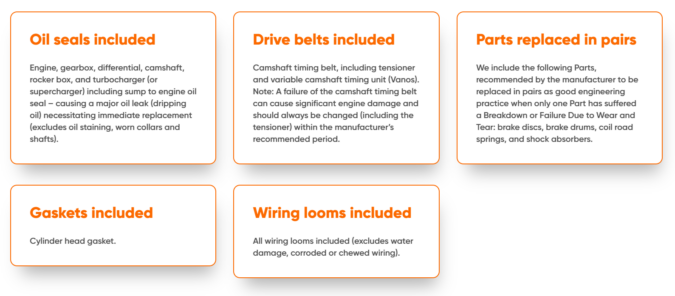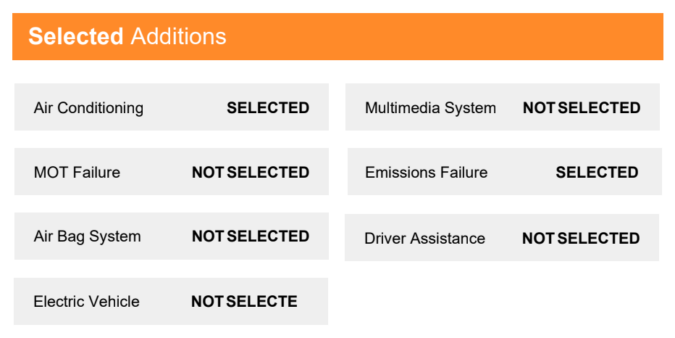Among the most vital decisions that you’ll have to make when you’re sorting out that aftermarket warranty plan for your used car, is picking and choosing which specific option to include or what components or parts on your car need coverage. While most aftermarket automotive warranties, such as Warrantywise’s many levels of coverage and plans, cover most parts and sections of your car, it doesn’t cover every single component.
Therefore, it’s crucial to consider which particular optional coverage is necessary or suitable for your car. In an ideal world, I’d select every single one of these options, but that would weigh too heavily on my monthly premiums. And besides, not all those options are necessary or practical for my specific car… In this case, it’s the latest addition to the Motor Verso project cars fleet, a really nice (but, it’s also a possible reliability time bomb) 2016 Bentley Continental GT.
Before moving on, one important factor you need to take into account is that different warranty providers will offer varying degrees of coverage and protection. In the case of Warrantywise, as I highlighted when I discussed in a separate post on how you could apply for an aftermarket warranty for your car, they have 5 different levels of coverage:
- 04/40 Plan (Platinum Plus) – Vehicles up to 4 years old and have under 40,000 miles
- 06/60 Plan (Platinum) – Vehicles up to 6 years old and have under 60,000 miles
- 08/80 Plan (Gold) – Vehicles up to 8 years old and have under 80,000 miles
- 10/100 Plan (Silver) – Vehicles up to 10 years old and have under 100,000 miles
- 12/120 Plan (Bronze) – Vehicles up to 15 years old and have under 150,000 miles
Therefore, I’ll be discussing optional warranty coverage in the context of what Warrantywise offers, which I do believe offers the most comprehensive aftermarket automotive warranty plans here in the UK. Thus, you are getting quite a lot, such as how Warrantywise would directly pay the total repair costs to the workshop and mechanics that you sent your car to for repairs.
An Important Consideration: Double-Checking Your Specific Coverage/Plan
Once again, I need to stress that the specific level of coverage that you’ll eventually get isn’t uniform either, as it’s highly dependent on what car you have, which (among Warrantywise’s 5 levels of coverage) plan you have, and what options you’ve picked (i.e. what parts of your car is covered, and other parts aren’t).
Therefore, you have to be very diligent in double-checking what coverage they’re able to offer you, and this is what Warrantywise refers to as their “Plan Schedule“. So, make sure that you take a bit of time to review all the terms and conditions, especially what is and isn’t covered (i.e. the exclusions) under warranty.
I know that reading up on how much coverage you get is really tedious and time-consuming to go through, but when it comes time to file a warranty claim, it will help to expedite the process, and reduce any frustrations or confusion. Thankfully, Warrantywise covers a bunch of different parts and components on a car.
NOTE: Once again, this (and all the other examples that I’ll mention down below) is subject to which level of coverage and plan you’re choosing, so I’d highly recommend that you read up on their FAQs, as well as their varying levels of coverage, to find out more specifics. Do consider the term length of plans you are looking at and also how much voluntary contribution is specified.
Some Examples Of By-Default Coverage For Certain Components
Nonetheless, when it comes to Warrantywise, you’re getting a lot of coverage for your car’s subsystems by default. In the case of their 04/40 Plan (as I noted earlier, there are significant variations between this and their other plans, so I’d highly suggest that you compare between them for more specifics), most of a car’s mechanical and electrical parts are covered.
This includes, but isn’t limited to:
- Your car’s many oil seals; including for the oiling and lubrication system in your engine, transmission, turbo or supercharger, differential, engine oil sump, etc.
- Gaskets, such as the head gaskets
- Belts, like the drive belt, camshaft timing belt, as well as their respective tensioners and timing units
- Wiring looms, including wiring harnesses that suffered water damage, fraying, corrosion, or chewed-up wires
- Cooling system, such as the radiator, heater, oil cooler, etc.
In addition, Warrantywise also offers, in regards to certain components, the ability to replace them in pairs, even if just a single one fails and needs fixing. This is owed to the fact that it’s oftentimes good practice that the pair are replaced as one, and that includes parts like the coil springs, or shock absorbers, among others.
Furthermore, Warrantywise’s warranty plans also cover the labour rates when you’re fixing up your car. So, depending on which level of coverage you’re getting, the amount will vary. For instance, in that 04/40 Plan, Warrantywise can cover up to £200 per hour on labour charges. Moreover, the default labour fee coverage could be further increased with additional premium add-ons, which we’ll discuss more of down below.
Optional Extras For Warrantywise’s Warranty Coverage & Plans
This then leads us to the many optional coverage and additions that Warrantywise offers as add-ons which you could tack on to the default coverage. Taking Warrantywise’s 04/40 Plan once again as an example, it’s possible that you could option additional coverage for your car’s airbag system, air conditioning parts, MOT failures, driver assistance systems, electric vehicle components, emissions system failures, and multimedia, among others.
So, here’s a brief summary of each of these optional additional coverages, and some little thoughts from me as to whether or not it’s worth it for you:
- Airbag Systems – This addition covers parts of the airbag warning system, among others. (In my experience, it’s rare to see airbag systems fail at all they’re built to be reliable and dependable). So, it could be argued that it’s not entirely worthwhile the extra charge. But, at the same time, when airbag systems do fail, they cost a lot of money to fix, so it could still be worth considering.
- Air Conditioning – Warrantywise won’t cover stuff like leaks or re-gassing, but it will cover parts of the A/C system, such as the condenser, compressor, and other pricey parts. (I absolutely think this could be worth it for most cars, given that it’s the one part of a car that we use all the time, and repairs are really expensive).
- Driver Assistance – This is really only applicable on newer cars that come with ADAS suites and other driver assistance systems, so it would cover parts like your car’s engine stop/start, parking assists, cruise control, front and rear camera systems, heads up display, gesture control, heated steering wheel, lane-keep assist, traffic sign recognition systems, and so on. (While I’m not sure how often these systems fail, I do know that replacing those sensors, wiring, and control modules is tremendously costly).
- Electric Vehicle – Once again, this is only relevant if you have an EV, and it includes coverage for problems with your EV-related parts. This includes the battery, drive motor(s), high-voltage inverter, power/energy control modules, gearbox, regenerative braking system, power delivery module, charging units, charging cables, etc.
- Emissions Systems – This includes failures with your car’s emissions components, such as problems with the catalytic converter, diesel particular filter (DPF), exhaust gas recirculation valve (EGR), Ad-Blue system, O2 sensors, etc. (Given that these emissions systems are vital components of every car, and since they can be rather pricey to repair, I’d also highly recommend this).
- MOT Failure – This covers the cost of repairs for certain components that have failed your car’s yearly MOT tests, like its lighting equipment, steering, suspension, brakes, tyres, seatbelts, vehicle structure, bodywork, exhaust, emissions systems, etc. This could give a lot of peace of mind for folks who need to quickly, as well as easily sort out anything that’s caused their cars to fail the MOT (subject to exclusions).
- Multimedia System – When you add this optional coverage, it’ll cover your car’s multimedia system, such as the DVD/CD player, radio, satnav system, etc. Depending on your particular car, this would be a higher-risk item on certain vehicles, more so than others, so it’s worth taking that into consideration.

